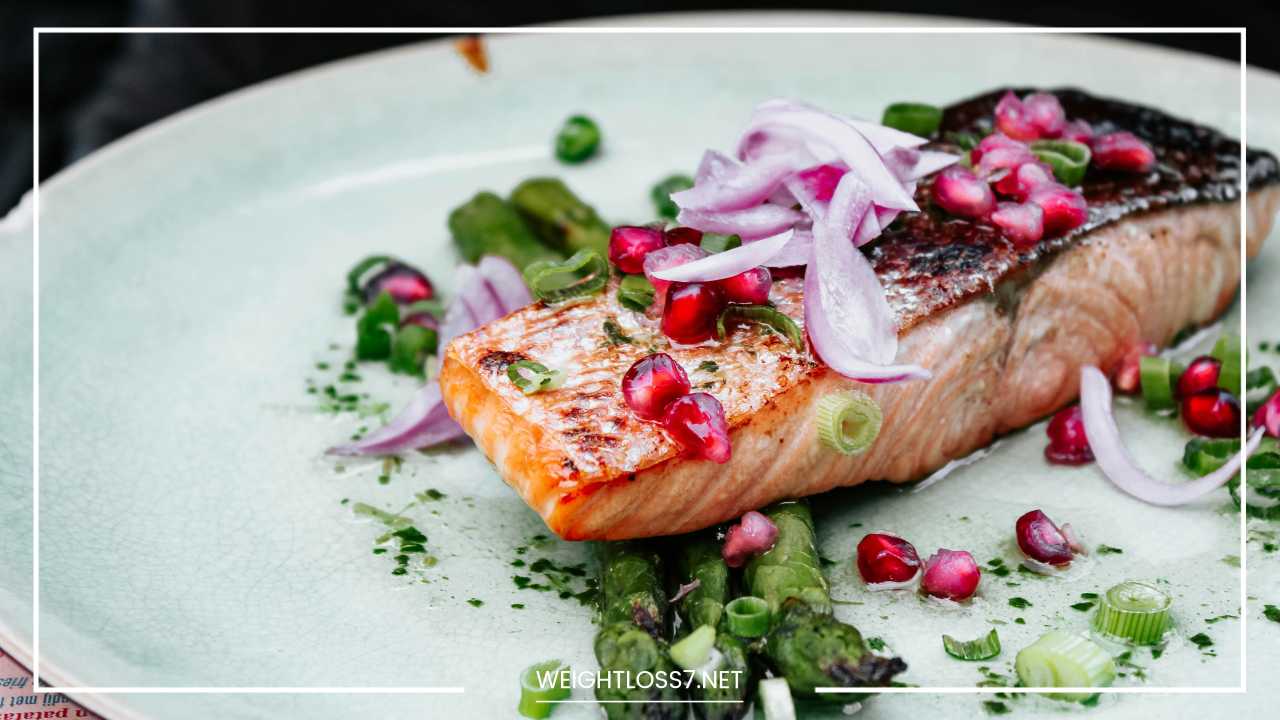Keto Diet for Beginners: A Step-by-Step Guide

Keto Diet for Beginners
Keto Diet for Beginners: A Comprehensive Step-by-Step Guide
The ketogenic diet, commonly known as the “keto diet,” has become a major trend in the world of nutrition and health.
Its rise in popularity is due to its potential benefits, including effective weight loss, better blood sugar control, and improved mental clarity.
For many, however, the prospect of starting a keto diet can be intimidating. This extensive guide is designed to demystify the keto diet for beginners, providing you with a thorough understanding and practical steps to help you embark on this nutritional journey with confidence.
Understanding the Keto Diet
At its core, the keto diet is about inducing a state called ketosis. Ketosis is a metabolic condition in which your body shifts from using carbohydrates as its primary source of energy to using fat.
When carbohydrate intake is significantly reduced, the liver starts to break down fat into molecules called ketones, which are then used for energy.
This shift can result in various health benefits, but understanding the underlying science and mechanics is crucial for successfully adopting the keto lifestyle.
The Science of Ketosis
To grasp how ketosis works, it’s helpful to understand a bit about metabolism and energy production. Normally, your body relies on glucose, derived from carbohydrates, for energy.
When glucose is in short supply, the liver converts stored fat into ketones through a process called ketogenesis. These ketones then become the primary energy source for your brain and body.
Key Components of the Keto Diet
A successful keto diet hinges on balancing three main macronutrients: fats, proteins, and carbohydrates. Each component plays a specific role in maintaining ketosis and achieving desired health outcomes.
- High Fat:
- Daily Intake: Fats should account for approximately 70-80% of your daily caloric intake.
- Sources: Prioritize healthy fats such as avocados, olive oil, coconut oil, and nuts. These fats not only help maintain ketosis but also provide essential fatty acids that support overall health.
- Why It Matters: Consuming a high amount of fat ensures that your body remains in a state of ketosis, where fat, rather than glucose, is used for energy.
- Moderate Protein:
- Daily Intake: Protein should make up about 20-30% of your daily calories.
- Sources: Include high-quality proteins like meats, poultry, fish, eggs, and dairy products.
- Why It Matters: Protein is vital for muscle maintenance and repair, but consuming too much can lead to gluconeogenesis, where excess protein is converted into glucose, potentially disrupting ketosis.
- Low Carbohydrates:
- Daily Intake: Aim to limit carbohydrates to 20-50 grams per day.
- Sources: Eliminate or drastically reduce grains, sugars, starchy vegetables, and most fruits. Focus on non-starchy vegetables like leafy greens, broccoli, and cauliflower.
- Why It Matters: Keeping carb intake low is essential to depleting your body’s glucose reserves and promoting ketone production.
Benefits of the Keto Diet
The keto diet offers a range of potential benefits, though individual results may vary. Many people have experienced the following positive effects:
- Weight Loss:
- Mechanism: By shifting your body’s energy source from glucose to fat, the keto diet may lead to increased fat burning and weight loss.
- Evidence: Studies have shown that people on keto diets often experience more significant weight loss compared to those on low-fat diets.
- Improved Blood Sugar Control:
- Mechanism: The keto diet can help stabilize blood sugar levels by reducing the intake of high-glycemic carbohydrates that cause blood sugar spikes.
- Evidence: Research indicates that keto diets can be particularly beneficial for individuals with diabetes or prediabetes, as it may reduce insulin resistance and improve glycemic control.
- Enhanced Mental Clarity:
- Mechanism: Ketones are a more efficient fuel for the brain compared to glucose, which may result in improved cognitive function.
- Evidence: Many people report increased mental focus and clarity when following a keto diet, although individual experiences can vary.
- Reduced Risk of Certain Diseases:
- Mechanism: The keto diet may lower inflammation and oxidative stress, which are linked to various chronic diseases.
- Evidence: Emerging research suggests that keto diets might reduce the risk of heart disease, certain cancers, and neurological disorders such as epilepsy and Alzheimer’s disease.
Getting Started on the Keto Diet
Starting a keto diet involves more than just changing your food choices; it requires planning and preparation to ensure a smooth transition and long-term success.
- Consult a Healthcare Professional:
- Why It’s Important: Before embarking on a new diet, especially one as distinct as keto, it’s crucial to consult with a healthcare provider, particularly if you have any underlying health conditions.
- What to Discuss: Your doctor can provide guidance on how the diet might affect your health and help you plan a safe and effective approach.
- Track Your Macronutrients:
- Why It’s Necessary: To ensure you’re staying in ketosis, it’s important to monitor your intake of fats, proteins, and carbohydrates.
- How to Track: Use a macronutrient tracker or app to log your food intake and ensure you’re meeting your keto goals.
- Stock Your Kitchen:
- Essential Foods: Fill your pantry and fridge with keto-friendly foods such as meats, fatty fish, eggs, cheese, nuts, seeds, healthy oils, and non-starchy vegetables.
- What to Avoid: Remove or minimize the presence of high-carb foods like bread, pasta, sugary snacks, and high-carb fruits.
- Be Patient:
- Adjustment Period: Transitioning into ketosis can take several days to weeks. During this time, you might experience symptoms such as fatigue, headaches, or nausea, often referred to as the “keto flu.”
- Coping Strategies: Stay hydrated, maintain your electrolyte balance, and give your body time to adapt to the new metabolic state.
Keto-Friendly Food Ideas
Incorporating a variety of keto-friendly foods into your diet can keep your meals interesting and nutritionally balanced.
- Proteins:
- Meats: Beef, pork, lamb, and other meats are great sources of protein and fats.
- Poultry: Chicken and turkey provide lean protein options that are keto-friendly.
- Fish and Seafood: Fatty fish like salmon, mackerel, and sardines are excellent for their healthy fat content.
- Eggs: Versatile and rich in both protein and fat, eggs are a staple in many keto diets.
- Dairy: Opt for full-fat options like cheese, butter, and cream.
- Healthy Fats:
- Avocados: High in monounsaturated fats and low in carbs, avocados are ideal for keto.
- Oils: Use olive oil, coconut oil, and MCT oil for cooking and dressings.
- Nuts and Seeds: Almonds, walnuts, chia seeds, and flaxseeds provide healthy fats and fiber.
- Low-Carb Vegetables:
- Leafy Greens: Spinach, kale, and lettuce are nutrient-dense and low in carbs.
- Cruciferous Vegetables: Broccoli, cauliflower, and Brussels sprouts offer fiber and essential vitamins.
- Others: Bell peppers, zucchini, and asparagus are great additions to a keto meal plan.
- Keto-Friendly Beverages:
- Water: Essential for hydration and overall health.
- Tea and Coffee: Unsweetened tea and black coffee are keto-approved.
- Sparkling Water: A refreshing alternative to sugary drinks.
Keto-Friendly Recipes
Experimenting with keto recipes can make the diet more enjoyable and sustainable. Here are some meal ideas to get you started:
- Breakfast:
- Scrambled Eggs with Avocado and Bacon: A hearty meal that combines protein, healthy fats, and low-carb vegetables.
- Keto Pancakes: Made with almond flour or coconut flour, these pancakes are a delicious low-carb alternative.
- Bulletproof Coffee: Coffee blended with butter and MCT oil provides a high-fat, energy-boosting start to your day.
- Lunch:
- Salad with Grilled Chicken or Salmon: Top a bed of leafy greens with your choice of protein, avocado, and a keto-friendly dressing.
- Keto-Friendly Wraps: Use lettuce or low-carb tortillas to make wraps filled with meats, cheeses, and vegetables.
- Leftover Stew: Make a stew with fatty cuts of meat and low-carb vegetables for a satisfying meal.
- Dinner:
- Steak with Roasted Vegetables: A classic meal that provides ample protein and healthy fats.
- Shrimp Scampi: Prepare shrimp with garlic, butter, and a side of non-starchy vegetables for a flavorful dinner.
- Chicken Stir-Fry: Use chicken and a variety of low-carb vegetables stir-fried in coconut oil for a quick and easy meal.
- Snacks:
- Cheese and Crackers: Pair cheese with keto-friendly crackers made from almond or coconut flour.
- Nuts and Seeds: A handful of almonds, walnuts, or pumpkin seeds makes for a satisfying snack.
- Olives: High in healthy fats and low in carbs, olives are a great snack option.
- Hard-Boiled Eggs: Easy to prepare and packed with protein and fat.
- Keto-Friendly Chocolate: Opt for chocolate with a high cocoa content and minimal sugar.
Tips for Success
Adhering to the keto diet requires commitment and attention to detail. Here are some tips to help you stay on track and achieve your goals:
- Stay Hydrated:
- Why It Matters: Proper hydration is crucial, especially during the initial phase of the keto diet when your body is adapting to ketosis.
- How to Hydrate: Aim to drink at least 8-10 glasses of water daily. You can also include electrolyte-rich beverages if needed.
- Monitor Electrolytes:
- Why It Matters: Ketosis can lead to increased excretion of electrolytes like sodium, potassium, and magnesium.
- How to Maintain Balance: Incorporate foods rich in these minerals, such as leafy greens, avocados, nuts, and bone broth.
- Don’t Overdo Protein:
- Why It Matters: Excessive protein can hinder the process of ketosis by increasing glucose production.
- How to Balance: Stick to moderate protein levels and adjust your intake based on your individual needs and activity level.
- Be Mindful of Hidden Carbs:
- Why It Matters: Many processed foods contain hidden carbohydrates that can disrupt ketosis.
- How to Avoid: Carefully read food labels and avoid products with added sugars or high-carb ingredients. Opt for whole, unprocessed foods whenever possible.
- Find a Support System:
- Why It Matters: Having a support network can provide motivation, share resources, and help you stay accountable.
- How to Connect: Join online forums, social media groups, or local keto communities to engage with others on a similar journey.
Common Challenges and Solutions
Starting a keto diet can come with its own set of challenges. Here are some common issues and how to address them:
- Keto Flu:
- Symptoms: Fatigue, headache, irritability, and nausea during the transition period.
- Solutions: Stay hydrated, increase your electrolyte intake, and ensure you’re consuming enough fats.
- Social Situations:
- Challenges: Social events and dining out can be tricky when sticking to keto.
- Solutions: Plan ahead by checking menus, communicating your dietary needs, and bringing your own keto-friendly dishes to gatherings.
- Meal Planning:
- Challenges: Finding and preparing keto-friendly meals can be time-consuming.
- Solutions: Plan your meals in advance, batch cook, and use meal prep services if available.
Final Thoughts
The keto diet can be a powerful tool for achieving various health goals, from weight loss to improved mental clarity.
By understanding the core principles, carefully monitoring your macronutrient intake, and making informed food choices, you can navigate your keto journey with confidence.
Consistency and patience are key, as adapting to this diet may take time. However, with determination and the right strategies, you can unlock the numerous benefits of the keto lifestyle and enhance your overall well-being.

















